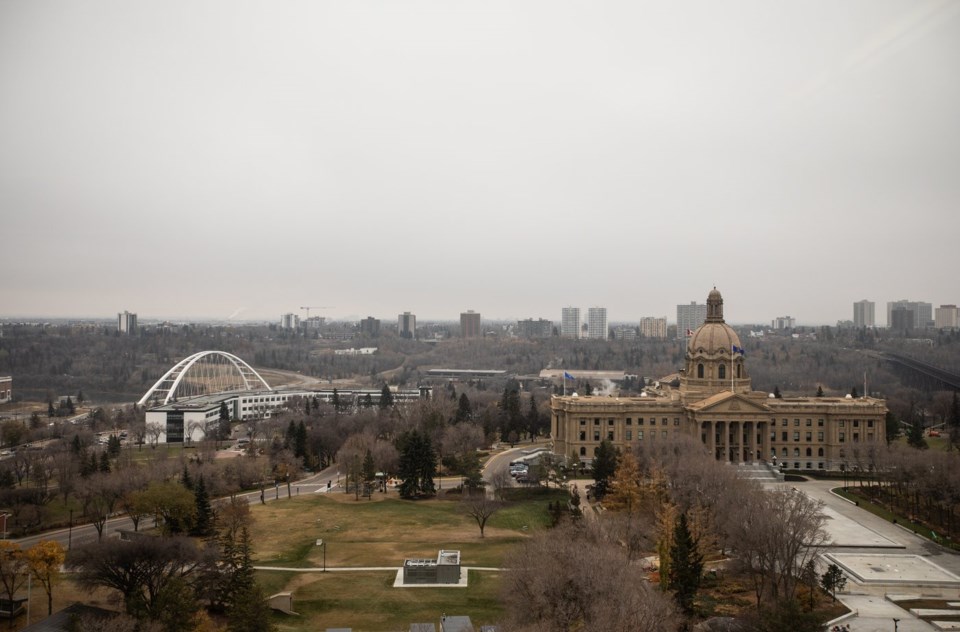EDMONTON — Government data shows the number of Albertans receiving provincial income support has reached a five-year high.
As of October, almost 57,500 residents were getting income support.
Comparing the same month in previous years, it's the highest since 2019, when almost 61,000 were receiving income support.
After 2019, the number dropped substantially, with close to 45,000 in 2020 and about 41,400 in 2021.
A government report on the data says the drop was largely attributable to the Canada Emergency Response Benefit, or CERB, which was rolled out by the federal government in response to the COVID-19 pandemic.
After the CERB program was disbanded, Alberta's provincial income support numbers started increasing again.
In October 2023 they reached nearly 48,000, then they grew by 20 per cent in 2024.
The provincial funding helps low-income or unemployed individuals and families cover basic expenses, including food and shelter. Those eligible can also receive financial assistance for child care, school expenses and help leaving family violence.
University of Calgary economics professor Ron Kneebone says the growth in recipients is likely a result of Albertans getting back on the provincial program after receiving CERB.
But he has some questions.
"It is curious to me that it did not jump right back up," said Kneebone, who also serves as scientific director of social policy and health research at the university's School of Public Policy.
He said it's possible CERB provided enough funding for people who were previously receiving provincial support to find stable employment.
Or it may have just taken years for those who were receiving CERB to start getting provincial income support again, Kneebone said.
He said factors like unemployment rates, the cost of living and well paying jobs can't be discounted when discussing the evident demand for social assistance programs like income support and food banks in the province.
"Behind all this, of course, is changing economic conditions," he said.
"Alberta's unemployment rate is remaining pretty … high, and so maybe that's driving more people onto social assistance over time."
Statistics Canada pegged Alberta's unemployment rate last month at 7.5 per cent — the fourth highest in the country, even though the province gained 24,000 new jobs in November.
During November's fiscal update, Finance Minister Nate Horner said his department expects the provincial unemployment rate to stay around the same mark in 2025.
Kneebone said gone are the days when "the best welfare program is a job."
"That may not be true anymore, it seems, or may be less true than what we ever saw before," he said.
"One of the things that might be happening is the cost of living is going up so much that having a job is not cutting it."
Marie Renaud, the Opposition NDP critic for community and social services, said she wasn't surprised the number of income support recipients has increased.
"We've got just a disaster evolving in Alberta," Renaud said.
She said inflation, the housing crisis, Alberta's low minimum wage compared to other provinces and a lack of accessible employment opportunities for disadvantaged Albertans are factors.
"(The United Conservative Party has) been in power for five years (and) it just continues to get worse and worse and worse, and that's what we're seeing," she said.
"They'd rather invest in food banks and shelter mats than actually address the root problem."
Ashley Stevenson, press secretary for Community and Social Services Minister Jason Nixon, said in an email that population growth was another factor behind the increase.
Alberta's population grew by about 3.9 per cent, or 186,704 people, between Oct. 1, 2023 and the same time last year.
Stevenson said the province's 2024-2025 budget for income support was just shy of $800 million.
"Projected caseload growth is included in budget planning work each year," she said, meaning the 2025-2026 provincial budget expected next month could see increased income support funding if the need is there.
This report by The Canadian Press was first published Jan. 6, 2025.
Jack Farrell, The Canadian Press



